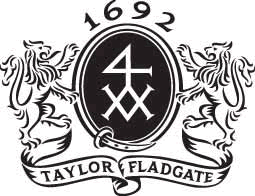Port Vintages
Unlike most wines, the term 'vintage' has a distinct meaning in the context of vintage port. While a "vintage" is simply the year in which a wine is made, most producers of Vintage port restrict their production of year-labelled bottlings to only the best years. This is only a few per decade. If a port house decides that its wine is of quality sufficient for a Vintage, samples are sent to the IVDP for approval and the shipper declares the vintage. In very good years, almost all the port houses will declare their wines. In intermediate years, the producers of blended Vintage Ports will not declare their flagship port, but may decide to declare the vintage of a single Quinta, e.g. the 1996 Dow's Quinta do Bomfim and Taylor's Quinta de Vargellas. Some houses now choose to declare their wines on all but the worst years. For instance Quinta do Vesuvio has declared a vintage every year with the exceptions of 1993 and 2002. Improved wine making technologies and better weather forecasts during the harvest have increased the number of years in which a vintage can be declared. Details on specific vintages can be found at
History
 The Port Wine-producing Douro region was established in 1756 and is the third oldest protected wine region in the world after the Tokaj-Hegyalja region in Hungary (1730) and Chianti (1716).
The popularity with the English started to emerge in 1703 after the Methuen Treaty (1703). This was when merchants were permitted to import wines at a low duty, while war with France deprived English wine drinkers of French wine. The long trip to England from Portugal often resulted in spoiled wine. In order to overcome this the wines were fortified to improve the shipping and shelf-life of the wine for its journey. The English involvement in the port trade can be seen in the names of many port shippers: Cockburn, Croft, Dow, Gould, Graham, Offley, Sandeman, Taylor and Warre being amongst the best known.
The Port Wine-producing Douro region was established in 1756 and is the third oldest protected wine region in the world after the Tokaj-Hegyalja region in Hungary (1730) and Chianti (1716).
The popularity with the English started to emerge in 1703 after the Methuen Treaty (1703). This was when merchants were permitted to import wines at a low duty, while war with France deprived English wine drinkers of French wine. The long trip to England from Portugal often resulted in spoiled wine. In order to overcome this the wines were fortified to improve the shipping and shelf-life of the wine for its journey. The English involvement in the port trade can be seen in the names of many port shippers: Cockburn, Croft, Dow, Gould, Graham, Offley, Sandeman, Taylor and Warre being amongst the best known.
Tradition
The unique tradition and etiquette surrounding the drinking of port stem from British naval custom.
Traditionally, the wine is passed "port to port" (left to left). The host will pour a glass for the person seated at their right and then pass the bottle or decanter to the left - this practice is then repeated around the table.
If the passing stalls at some point, it is considered poor form to ask for the decanter directly. Instead, the person seeking a refill would ask of the person who has the bottle: "Do you know the Bishop of Norwich?" (after the notoriously stingy Bishop). If the person being thus queried does not know the ritual (and so replies in the negative), the querent will remark "He's an awfully nice fellow, but he never remembers to pass the port."
In other old English traditions when port is decanted, commonly at the dining table, the whole bottle should be finished in one sitting by the diners, and the table should not be vacated until this is don
Storing and Serving
Port, like other wines, should be stored in a cool, dark location with a steady temperature (such as a cellar). The bottle should be lying on its side.Port should be served at between 15 to 20 degrees Celsius. Once opened, Vintage and single quinta port wines should be consumed within 2-4 days once decanted. Late Bottled Ports may be consumed within a week. Typically, the older the vintage, the quicker it must be consumed. Vintage port and single quita wines are generally unfiltered and so form a sediment (or crust) in the bottle and so require decanting. This process also allows the port to breathe; however, how long before serving is dependent on the age of the port, but is typically 3-5 hours.







